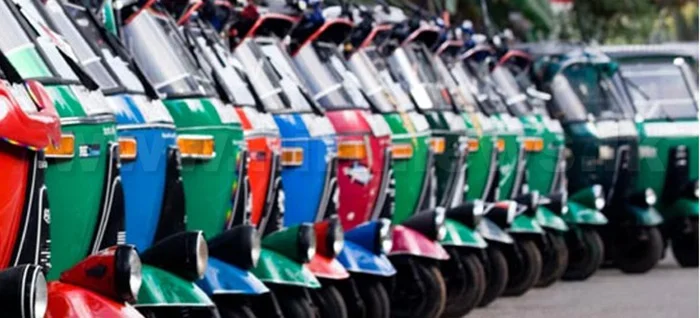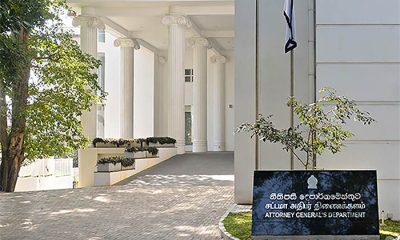Opinion
Rise of New Economic Liberation

From cremation calls, to a huge ban on imports, we are moving to the Rajavasala Vimukthiya. Those who still use the Vimukthi line in politics had better be on the watch.
Amidst all the burdens of the Covid-19 pandemic that has now taken hold in Sri Lanka, there is a raging debate about burial, or cremation, of the bodies of Covid-19 deceased.
This is fast moving to a debate that is isolating one ethnic minority, against a combination of the majority, and several minorities, which can have painful consequences.
The call for cremations is becoming increasingly strident, against the burial callers. What is surprising is that the cremation criers – from politicians, the Sangha, academics, business people, intellectuals and social movers – have not thought of, or said the obvious.
 It is that the continuing spread of the pandemic is entirely due to burials of the deceased. Just look at all those countries, from the record holding US, to so many in Europe, such as Spain, the UK, and Russia, where burials are the order of the day for the Covid-dead. Although there is no scientific evidence to prove it so far, the rapidly expanding numbers of the infected must certainly have much, or everything, to do with the many thousands of burials. In some US states, they are now even hiring prisoners to do the burials. Countries such as Brazil and Argentina cannot cope with the burials.
It is that the continuing spread of the pandemic is entirely due to burials of the deceased. Just look at all those countries, from the record holding US, to so many in Europe, such as Spain, the UK, and Russia, where burials are the order of the day for the Covid-dead. Although there is no scientific evidence to prove it so far, the rapidly expanding numbers of the infected must certainly have much, or everything, to do with the many thousands of burials. In some US states, they are now even hiring prisoners to do the burials. Countries such as Brazil and Argentina cannot cope with the burials.
So why not just tell Sri Lanka, and the world, to stop all burials if the spread of Covid-19 is to be achieved? This can be an important publicity factor for Sri Lanka, in a world of the rapidly dying, enabling our leaders to forget the economic crisis we are now in, and make huge anti-burial ceremonies throughout the country. We can take the ‘One Country, One Law” principle to our people in words, largely ignoring the “One Country, Many Laws’ policy that strengthens the power of the already powerful.
Whatever opposition the pro-burial Muslims may take, they could be told that the spread of Covid-19 and deaths in Iran, Iraq and all other Islamic states is also due to their strict burial policies, in keeping with their politico/religious teachings.
We must ignore and completely forget the lack of any scientific evidence to prove this. Just keep in mind that our 2,500-year plus civilization had nothing to do with modern science. It is best to keep science out of both politics and government, in Sri Lanka, because the application of science poses a major threat to the power of crooked politics. Governance here today is a display of the absence of science, and much more the play of words and distorted thinking, which is profitable for those holding the reins of power – the Rajavasala Balaya, and all others hanging on to such Vasala Delight!
We have now heard President Gotabaya Rajapaksa address the nation, having completed one year in power – with all the power he has after the 20A. There was nothing said there about the destructionof forest land, the great expectations of more Presidential Pardons to convicted criminals, or how education is to be actually improved and made relevant, which most probably will be by having more catcher universities.
We also had his brother – Prime Minister and Finance Minister (apart from many other portfolios) – make the 75th Budget Speech in the country, as he reached 75th year in life. The 145 plus MPs with the government will see the Budget passed, with hardly any serious thinking of the criticisms by those in the hugely reduced Opposition, some of whom may even be in the lineup for more jumps to the government ranks; for the satisfactions of power and shelter in the Rajavasala.
Will Mahinda present the 80th Budget, too, or will his brother, Basil, move on from the 76th or 77th. Keep guessing.
There was much valid criticism by the Opposition’s Mr. Harsha de Silva, both an economist and politician. Much of what he said was about the poor arithmetic of the budget thinkers or writers, and also about the non-meaningful policies of Pohottuva politics of today. The combination of the Gotabaya and Mahinda political thinking leaves much to be desired in the context of good economics and budgetary policy. But that is the stuff of governance today – a Rajavasala Aarthikaya or Palace Economics!
Let’s move to the big Gotabaya policy of import bans. We saw this decades ago, under PM Sirimavo Bandaranaike, which certainly helped build several industries and promote local agriculture, but was too much of a burden on the people. With all the power of 20A and the huge majority in Parliament, we could certainly move to much bigger import bans, that will give meaning to the many special portfolios – such as Clay and Batik, just two examples.
If we are to really help the Clay or Pottery Industry, all imports that threaten clay products must be banned. Why should this country, having so much tradition and trust in clay, have metal pots, pans, saucepans, jugs, cups and saucers, jugs and other vessels? Isn’t it time to ban all of this and give the Clay Industry the opportunity it needs, to bring us back to the Clay Glory of the past? This can give a boost to our youth, who may bring new inventions on clay built electrical cookery products.
This could soon lead to a powerful “Hali-Valang” economy, that would stand out in the developing world for the First World to also take note.
There is also great hope for the Batik Industry. Isn’t it time to make a call for people to stop western design clothes, from trousers, shirts, coats, skirts and gowns, etc., and move to local Batik wear. There is so much designer opportunity here, bringing a huge boost to the Batik producers. Just think of all the fashion shows that will display the new Batik Wear, from vertical striped trousers and horizontals striped coats, mixed stripe shirts, and so much in the colourful wear of women. We are on the threshold of a great boost to our economy, with the dance of batik sarongs and trousers, and designer goals that will soon strike global markets. There could also be very special Batik Underwear and Lingerie producers who will even outdo the global leaders.
This is the rise of Gotabaya Economics with Mahinda Politics. We are fast moving to the Rajavasala Sandarshana Yugaya – the Age of Palace Display. Let’s think of more bans on imports of what we can produce here. Just tell the European Union to mind its own business, and let us achieve our own New Economic Liberation. The Rajavasala Vimukthiya.
Opinion
Gnana Moonesinghe

Gnana Moonesinghe, who passed away recently had a multi-faceted life although never a career. A woman of many interests – in literature, politics, diplomacy, journalism – she spanned these divides with great felicity and charm.
Gnana Coomaraswamy was born into a well-known Jaffna family. Her father was educated at Cambridge University in England and was a barrister. He pursued a career in education being principal of a leading Jaffna school. Gnana herself had an education in Colombo, and she entered the University of Ceylon at Peradeniya, from Ladies College, in 1955.
Her sister had married Dr. Kumaran Ratnam, who was once a Mayor of Colombo. Gnana married Mangala Moonesinghe, a lawyer and politician who was a descendent of Anagarika Dharmapala. Mangala Moonesinghe was MP for Bulathsinhala in 1965-1977. During that period, Gnana was heavily engaged in looking after that electorate and developed a close relationship with many of his constituents. She enjoyed being a politician’ s wife.
When Mangala was appointed High Commissioner in New Delhi in the 1980s, Gnana found another congenial and productive occupation. She was the perfect wife of a diplomat, and the couple enjoyed the diplomatic life in New Delhi and the high profile among the New Delhi circles. Mangala and Gnana developed a close relationship with Prime Minister, Gujaral of India. While in Delhi, Gnana produced a book – “Footprints of the Buddha”. After New Delhi, Mangala and Gnana had a couple of years in London as Sri Lanka’s High Commissioner. On return to Sri Lanka, Gnana was engaged in domestic, political and civil society issues. She and Mangala had a particular interest in the ethnic issue. She was a regular contributor to the newspapers and particularly concerned with the politics of the time. She edited a book on Sri Lankan government structures some time during this period. She was a member of the Disputes Resolution Council of the Press Complaints Commission of Sri Lanka.
It is 70 years since I first met Gnana. We both entered university at Peradeniya in 1955. From 1956-1959, Gnana and I read for a special degree in Economics. There were three young women and over 20 men reading for this course. Gnana specialised in political science. Only a very few of us are still around. It is a pleasure to have known Gnana all these long years. She leaves a son, Sanath who lives in the United States, and daughter Avanti ,who is married to Murtaza Esufally.
Leelananda De Silva
Opinion
Pope decries ‘major crisis’ of Trump’s mass deportation plans, rejects Vance’s theology

by Christopher White Vatican Correspondent
Pope Francis has written a sweeping letter to the U.S. bishops decrying the “major crisis” triggered by President Donald Trump’s mass deportation plans and explicitly rejecting Vice President JD Vance’s attempts to use Catholic theology to justify the administration’s immigration crackdown.
“The act of deporting people who in many cases have left their own land for reasons of extreme poverty, insecurity, exploitation, persecution or serious deterioration of the environment, damages the dignity of many men and women, and of entire families, and places them in a state of particular vulnerability and defencelessness,” reads the pope’s Feb. 11 letter.
Since taking office on Jan. 20, the Republican president has taken more than 20 executive actions aimed at overhauling the U.S. immigration system, including plans to ratchet up the deportations of undocumented migrants and halt the processing of asylum seekers.
The pope’s letter, published by the Vatican in both English and Spanish, offered his solidarity with U.S. bishops who are engaged in migration advocacy and draws a parallel between Jesus’ own experience as a migrant and the current geopolitical situation.
“Jesus Christ … did not live apart from the difficult experience of being expelled from his own land because of an imminent risk to his life, and from the experience of having to take refuge in a society and a culture foreign to his own,” writes Francis.
While the letter acknowledges the right of every country to enact necessary policies to defend itself and promote public safety, the pope said that all laws must be enacted “in the light of the dignity of the person and his or her fundamental rights, not vice versa.”
The pontiff also goes on to clearly reject efforts to characterise the migrants as criminals, a frequent rhetorical device used by Trump administration officials.
“The rightly formed conscience cannot fail to make a critical judgment and express its disagreement with any measure that tacitly or explicitly identifies the illegal status of some migrants with criminality,” the pope writes.
Soon after Trump took office, Vice President JD Vance — a recent convert to Roman Catholicism — attempted to defend the administration’s migration crackdown by appealing to St. Thomas Aquinas’ concept of ordo amoris.
“Just google ‘ordo amoris,’ ” Vance posted on social media on Jan. 30 in response to criticism he received following a Fox News interview.
During that interview, Vance said: “You love your family, and then you love your neighbour, and then you love your community, and then you love your fellow citizens in your own country. And then after that, you can focus and prioritise the rest of the world.”
While not mentioning Vance directly by name, Francis used his Feb. 11 letter to directly reject that interpretation of Catholic theology.
“The true ordo amoris that must be promoted is that which we discover by meditating constantly on the parable of the ‘Good Samaritan,’ that is, by meditating on the love that builds a fraternity open to all, without exception,” wrote the pope.
Since his election in 2013, Francis has become one of the world’s most vocal champions. His latest letter, however, marks a rare moment when the pontiff has directly waded into a country’s policy debates.
In the letter, however, he states that this is a “decisive moment in history” that requires reaffirming “not only our faith in a God who is always close, incarnate, migrant and refugee, but also the infinite and transcendent dignity of every human person.”
“What is built on the basis of force, and not on the truth about the equal dignity of every human being, begins badly and will end badly,” the pope warned.
In a brief post on social media, the U.S. bishops’ conference shared the pope’s letter with its online followers.
“We are grateful for the support, moral encouragement, and prayers of the Holy Father, to the Bishops in affirmation of their work upholding the God-given dignity of the human person,” read the statement.
(The National Catholic Reporter)
Opinion
Is Sri Lanka’s war on three-wheelers an attack on the poor?

For decades, three-wheelers—commonly known as tuk-tuks—have been a vital part of Sri Lanka’s transportation system. They provide an affordable and convenient way for people to get around, especially in areas where public transport is unreliable. However, successive governments have repeatedly discouraged their use without offering a viable alternative. While concerns about traffic congestion, safety, and regulations are valid, cracking down on three-wheelers without a proper replacement is unfair to both commuters and drivers.
For millions of Sri Lankans, three-wheelers are not just a convenience but a necessity. They serve as the primary mode of transport for those who cannot afford a private vehicle and as the only reliable last-mile option when buses and trains are not accessible. Senior citizens, people with disabilities, and those carrying groceries or luggage rely on tuk-tuks for their ease and accessibility. Unlike buses, which often require long walks to and from stops, three-wheelers offer door-to-door service, making them indispensable for those with mobility challenges.
In rural areas, where public transport is scarce, three-wheelers are even more critical. Many villages lack frequent bus services, and trains do not serve short-distance travel needs. Tuk-tuks fill this gap, ensuring people can reach markets, hospitals, and workplaces without difficulty. In urban areas, they provide a quick and affordable alternative to taxis and private vehicles, especially for short trips.
Despite their importance, three-wheelers have increasingly come under government scrutiny. Restrictions on new registrations, negative rhetoric about their role in traffic congestion, and limits on their operation in cities suggest that policymakers view them as a problem rather than a necessity. Authorities often cite traffic congestion, safety concerns, and lack of regulation as reasons for discouraging tuk-tuks. While these issues are valid, banning or restricting them without addressing the underlying transport challenges is not the solution.
The biggest flaw in the government’s approach is the absence of a proper alternative. Sri Lanka’s public transport system remains unreliable, overcrowded, and often inaccessible for many. Buses and trains do not provide efficient coverage across all areas, and ride-hailing services like Uber and PickMe, while convenient, are often too expensive for daily use. Without a suitable replacement, discouraging three-wheelers only makes commuting more difficult for those who rely on them the most.
Beyond the inconvenience to passengers, the economic impact of limiting three-wheelers is significant. Thousands of drivers depend on tuk-tuks for their livelihoods, and with rising fuel prices and economic instability, they are already struggling to make ends meet. Further restrictions will push many into financial hardship, increasing unemployment and poverty. For passengers, particularly those from lower-income backgrounds, losing three-wheelers as an option means higher transport costs and fewer choices.
Instead of discouraging tuk-tuks, the government should focus on improving and regulating them. Many countries have successfully integrated three-wheelers into their transport systems through proper policies. Sri Lanka could do the same by enforcing proper licensing and training for drivers, introducing digital fare meters to prevent disputes, ensuring better vehicle maintenance for safety, and designating tuk-tuk lanes in high-traffic areas to reduce congestion. These measures would make three-wheelers safer and more efficient rather than eliminating them without a backup plan.
The government’s push to restrict three-wheelers without providing a suitable alternative is both unfair and impractical. Tuk-tuks remain the only viable transport option for many Sri Lankans, particularly senior citizens, low-income commuters, and those in rural areas. Instead of treating them as a nuisance, authorities should recognise their importance and focus on making them safer and more efficient. Until a proper substitute is in place, discouraging three-wheelers will only create more problems for the very people who need them the most.
P. Uyangoda
Director-Education (retired)
Nedimala
-

 Business7 days ago
Business7 days agoSri Lanka’s 1st Culinary Studio opened by The Hungryislander
-

 Sports7 days ago
Sports7 days agoAir Force Rugby on the path to its glorious past
-

 Features7 days ago
Features7 days agoRani’s struggle and plight of many mothers
-

 News5 days ago
News5 days agoUSD 900,000 paid monthly for three unused SriLankan aircraft– Dy. Finance Minister
-

 Opinion7 days ago
Opinion7 days agoThe Buddha I believe in
-

 Editorial7 days ago
Editorial7 days agoFirst they come for criminals …
-

 News6 days ago
News6 days agoParliament approved USAID and other foreign-funded projects: Karu J
-

 Features7 days ago
Features7 days ago“Independent” Prosecutor’s Office: Myth and Reality











